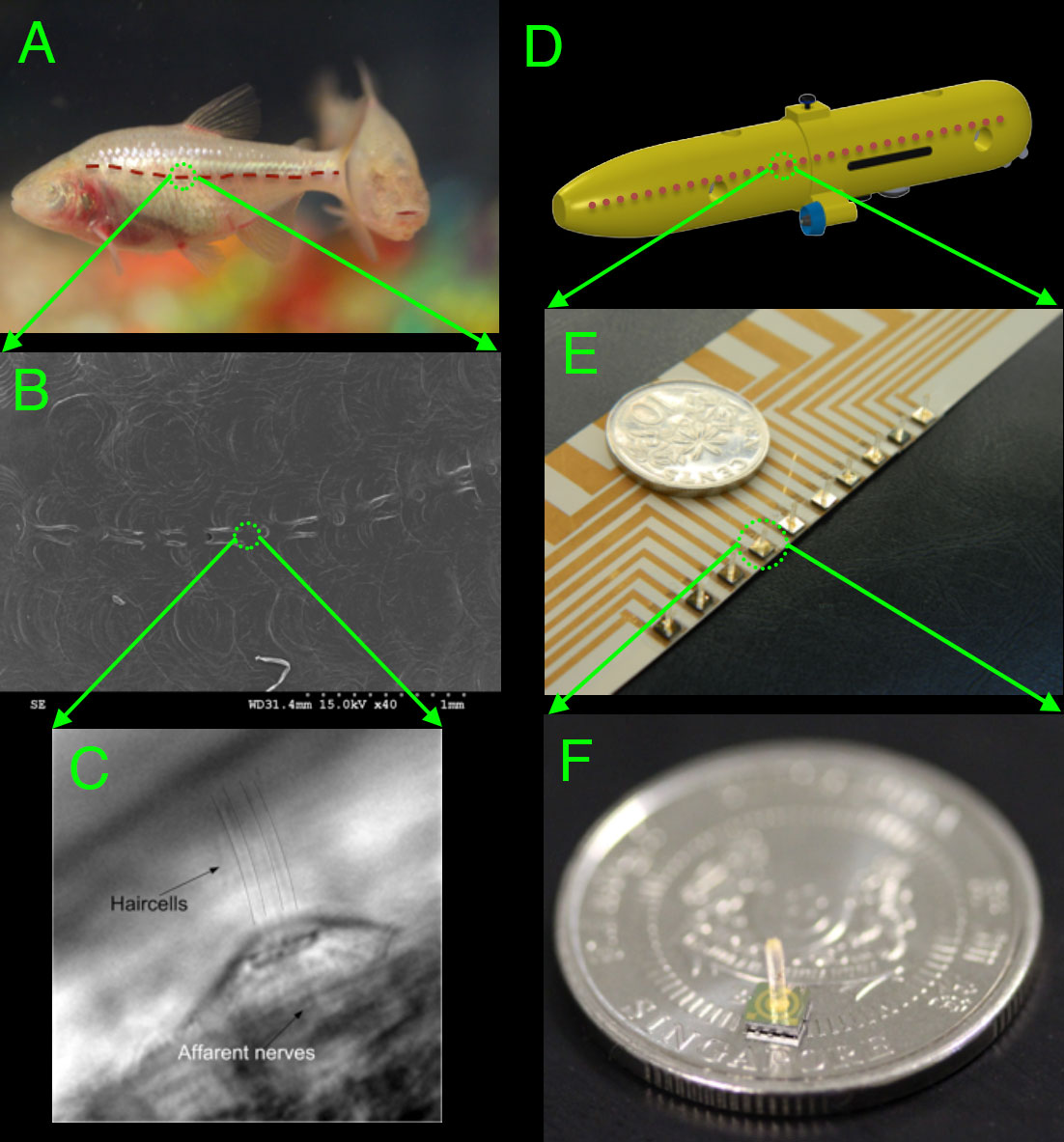Biomimetic artificial lateral-lines
Blind cavefish that survives in deep-waters, is bestowed with the finest set of flow sensors called neuromasts that enable the fish to detect minute water flow disturbances down to 1μm/s. Although blind, the fish accomplishes stupendous tasks like hydrodynamic vision and super-maneuverability. The artificial microelectromechnical systems (MEMS) sensors we developed, embrace the structural design and the sensing principles of the ingenious neuromasts sensors and attain ultrahigh sensitivity and accuracy. This work proposes the design, fabrication and experimental characterization of micro-sensors inspired by the superficial and canal neuromast sensors in the fish. The MEMS flow sensors developed could bring in a sea change in the abilities of current underwater vehicles and provide an irreplaceable alternative to the existing sensors. This proposal presents two types of sensors– LCP membrane haircell sensor for sensing steady-state laminar (dc) flow and Pb(Zr0.52Ti0.48)O3 piezoelectric membrane haircell sensor for sensing oscillatory (ac) flow. Through division of labor, these sensors form a system capable of performing a complete flow analysis. The word haircell refers to the vertically standing pillar in the sensor that extends into the flow and responds to the flow variations. It is called haircell since it works analogous to the biological haircells in the neuromast sensors in fish. LCP membranes are often good for achieving high sensitivities due to their low elastic modulus. On the other hand, PZT membrane MEMS sensors have been established to function excellently at higher frequencies and do not need any external power supply during operation. Therefore in order to perform a complete sensing of flow velocities and disturbances (ac flows) underwater, we designed two sensors, one for each purpose. We have successfully completed the design, batch-fabrication, in-lab and in-field characterization and accelerated reliability analysis of these biomimetic sensors.

Figure 1. Bio-inspired MEMS flow sensors. (a) A photograph of the blind cavefish showing the line of neuromast sensors (b) Scanning electron microscope image of the lateral-line showing the canal neuromast sensors on the fish. A single neuromast exists embedded between successive tiny pores seen on the lateral-line. (c) An individual neuromast sensor as seen through the direct interference contrast (DIC) microscope (d) An AUV showing the line of location of the sensors for near-filed underwater sensing (e) A flexible array of MEMS piezoelectric self-powered flow sensors fabricated in this work (f) The size of an individual MEMS flow sensor as compared to a Singapore 10 cents coin.